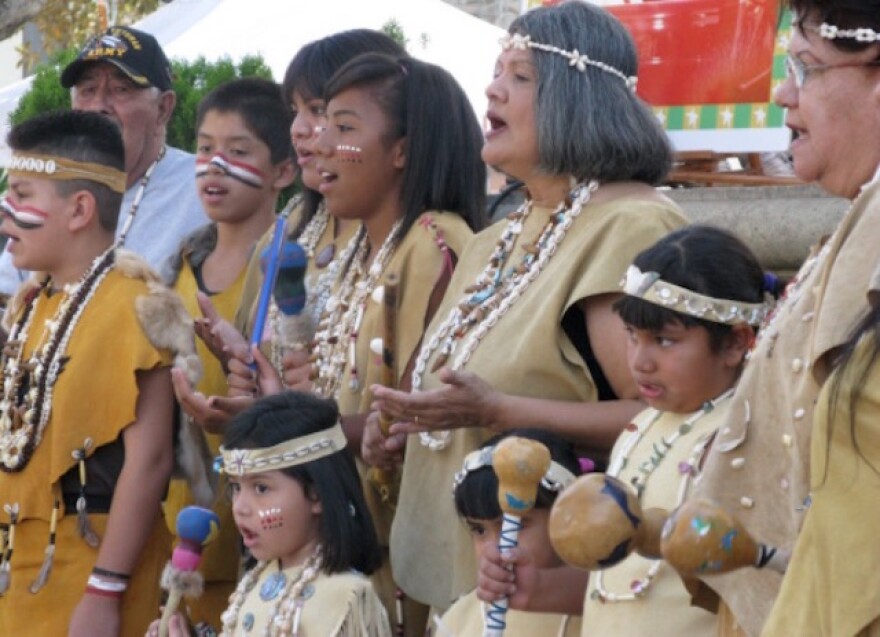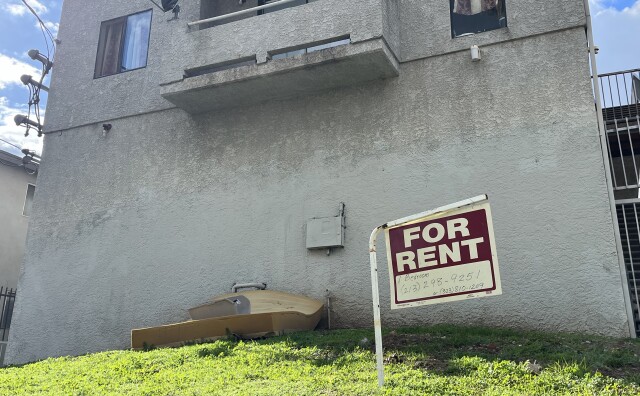What To Know About Land Acknowledgment, And Why It's Deeper Than Just A Statement

Maybe you’ve been at an event or gathering recently that opened with someone, maybe of Indigenous descent, sharing an acknowledgment like this:
Indigenous land acknowledgment is not new — it has always been a part of Indigenous protocols — but Professor Mishuana Goeman, Tonawanda Band of Seneca, told our newsroom's news affairs show AirTalk the practice has become more visible in the U.S. in the last several years as public officials, universities, nonprofits and others start to incorporate land acknowledgment into their regular communications.
“It’s been prevalent in Canada for some years now, but always within our traditions as native peoples," said Goeman, who teaches gender and American Indian Studies at UCLA and is also Special Advisor to the Chancellor on Native American and Indigenous Issues.
"I think [in the U.S.] post-Standing Rock, many people saw how Native people were fighting for their rights to protect water, their rights to protect land, and it’s something that resonated a lot with all youth, not just indigenous youth, who see resources, particularly natural ones, becoming less and less," she said.
While land acknowledgments hold different levels of significance to different Indigenous peoples and tribes, for the Gabrieleno Tongva people, the original inhabitants of the land we now call Los Angeles, it's an important step in the process of "rematriation" — the reunion of the land with its original caretakers and stewards.
“The acknowledgment of the land is a way of transforming and undoing the intentional erasure of the Indigenous people of the land," said Kimberly Morales Johnson, Gabrieleno Tongva, who is tribal secretary for the San Gabriel Band of Mission Indians/Gabrielino Tongva and a member of the Los Angeles City/County Native American Indian Commission.
"By stating our name, by talking about us, by making 'Gabrielino Tongva' a word that people know, it makes them consciously think about the land that they’re occupying and standing on, and that they’re guests of this land," she said.
A (Very Brief) History Of The Gabrielino Tongva People
If you live in what's now known as the Los Angeles Basin, you're living on what its Indigenous residents call Tovaangar, which means "the world." Tovaangar was (and still is) home to the Gabrielino Tongva people, who lived on and cultivated the land for thousands of years before Spanish settlers arrived in the mid 1500s and, in search of fertile soil, stole their land, enslaved their people and forced them into labor maintaining the land and working for the various missions.

By the mid to late 1700s, most of the Gabrieleno Tongva worked for the missions or the landed gentry, their people ravaged by European diseases. By 1800, most of the Gabrieleno Tongva people were either dead, working for missions or had fled the area altogether to settle elsewhere. It was not until 1994 that California formally recognized the Gabrieleno Tonvga people under state law. They still have not been granted federal land rights by the federal government. But even though they have gained some recognition, many Gabrieleno Tongva people have been priced out of the communities on their land.
It's this idea of the separation of the Indigenous people from their land that sits at the heart of the importance of land acknowledgment, said Morales Johnson.
“The relationship with the land is so important — it’s vital to our being, she said. "The word ‘Tongva’ literally means ‘people of the Earth’ because in our traditions, we’re taught that we rose up out of the ground. So if you think that Mother Earth is your birthplace, you are in constant relation with Mother Earth, and [there is a] respect and reciprocity that goes along with that."
Going Beyond A Statement
It's not hard to find examples of land acknowledgment, but Goeman, Morales Johnson and others say it must go beyond just a statement read at the beginning of a meeting or gathering. It has to be partnered with an effort to learn and understand the history of the Indigenous peoples of Southern California, as well as a commitment to taking concrete action to support Indigenous communities.
Goeman said when she was working with the Gabrieleno Tongva tribe to craft UCLA's land acknowledgment, one of the biggest points the tribal elders made was that they did not want to be seen as an extinct people.
"The one thing they said to me while we were putting together this land acknowledgment over the course of six months was that they didn’t want to be seen as a sad replica of the past or of just traumatic figures," she said. "They really wanted to be seen in relationship to current people now, and that’s where we got the acknowledgment of Indigenous peoples ‘past, present and emerging’ coming in the acknowledgment that we use at UCLA."
Morales Johnson said some people in Los Angeles have come to the tribe and asked to donate land, and some community members are working on setting up a nonprofit to hold that land in a trust in the Gabrieleno Tongva name so they can gather, hold ceremonies and once again own the land that was stolen from them and invite others to return without worrying about cost.
“Everybody wants to write the land acknowledgments and we appreciate that they’re starting to talk about us," she said. "But in addition, let’s move forward in the next way to healing the land."
We also published a short history of the Tongva people that you can read here.
-
- Gabrieleno Tongva Official Website
- UCLA's Mapping Indigenous L.A. Project
- Land Acknowledgment Toolkit (California Indian Culture and Sovereignty Center at California State University)
- Guide To Going Beyond Land Acknowledgment (Native Governance Center, a nonprofit serving Native nations in the Dakotas)
-
The severe lack of family friendly housing has millennial parents asking: Is leaving Southern California our only option?
-
As the March 5 primary draws closer, many of us have yet to vote and are looking for some help. We hope you start with our Voter Game Plan. Since we don't do recommendations, we've also put together a list of other popular voting guides.
-
The state's parks department is working with stakeholders, including the military, to rebuild the San Onofre road, but no timeline has been given.
-
Built in 1951, the glass-walled chapel is one of L.A.’s few national historic landmarks. This isn’t the first time it has been damaged by landslides.
-
The city passed a law against harassing renters in 2021. But tenant advocates say enforcement has been lacking.
-
After the luxury towers' developer did not respond to a request from the city to step in, the money will go to fence off the towers, provide security and remove graffiti on the towers.










